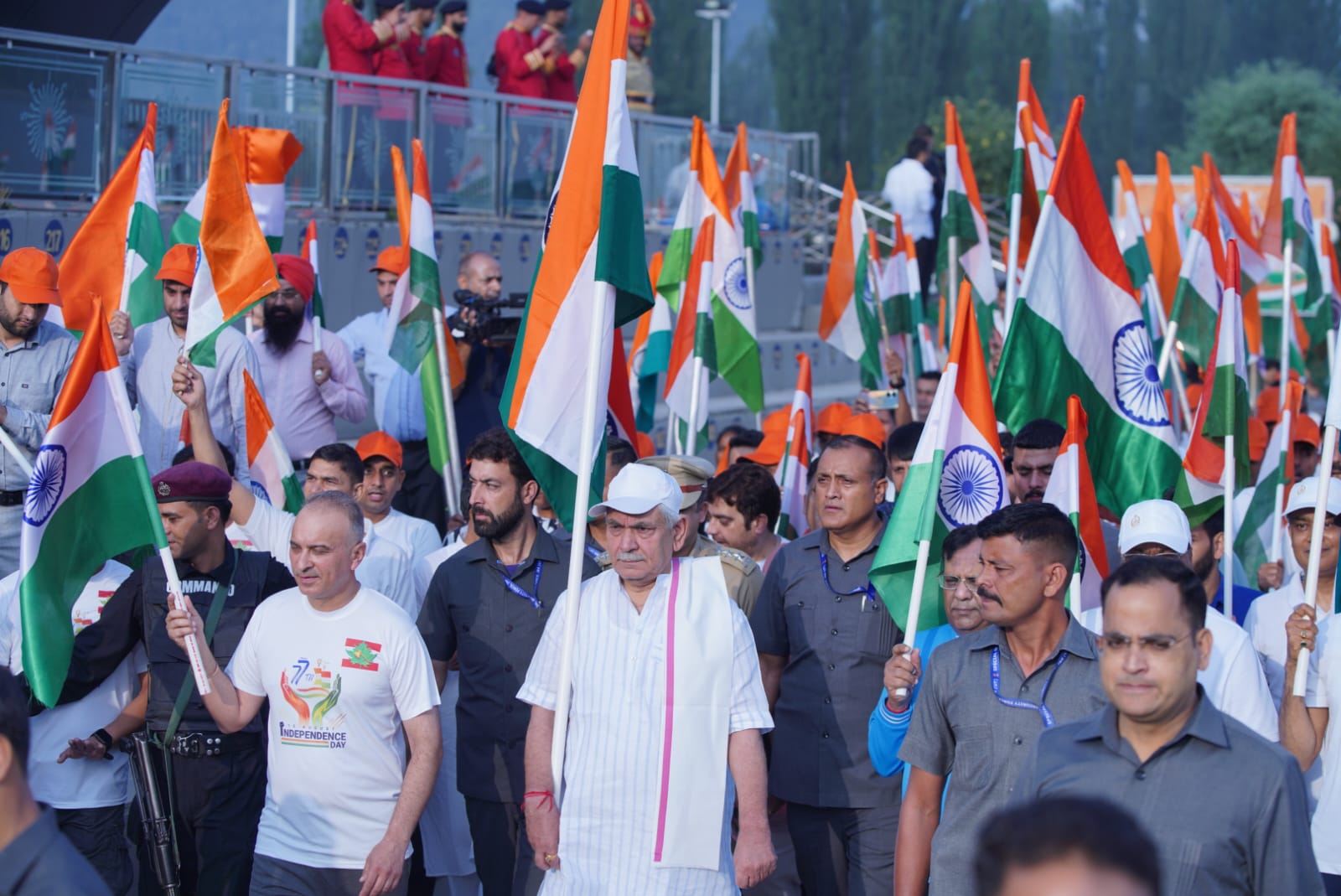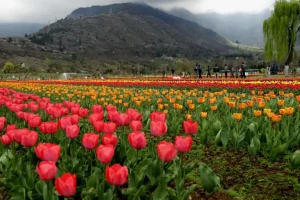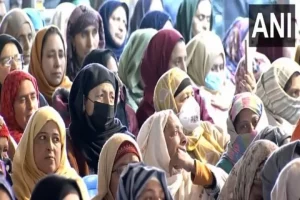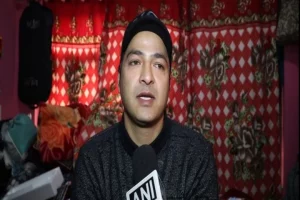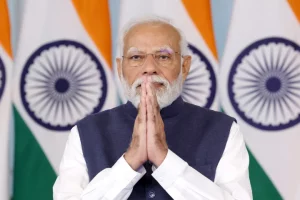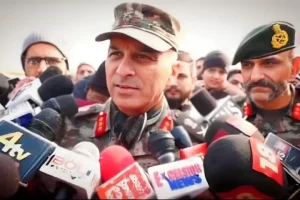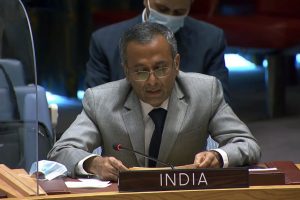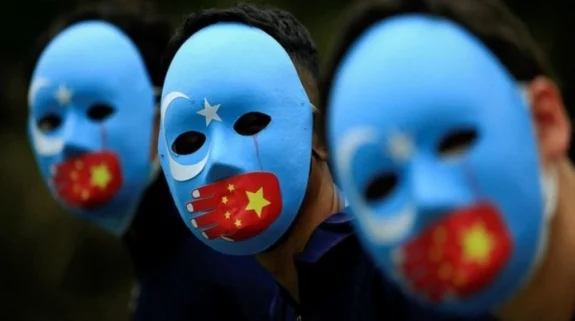Srinagar: On Sunday and Monday, thousands of Kashmiris participated in the “Har Ghar Tiranga” campaign initiated by LG Manoj Sinha with a grand show in Srinagar. Reports of such rallies are pouring in from all district headquarters in a new Kashmir that presents a stark contrast to its turbulent years of terrorism.
While extremists such as Ahad Jan and Burhan Wani have vanished in the last 13 years—particularly in the last 5 years—the man in news from Bandipora on Independence Day 2023 is carpet weaver Mohammad Maqbool Dar, 35, of Ashtengo.
In a first, the 35-year-old weaver has designed and hand-knotted the map of India in tricolour on a carpet. “I was thinking I should make something different for my country, so I made a map of India in tricolour. It took me two months — day and night — to weave this design,” Dar said at his unit ‘Delight Carpet Weavers’. He is hopeful that his unique carpet would hang on a wall of the new Indian Parliament building in New Delhi very soon.
In the summer of 2010, as many as 55 civilians died in different incidents of police and CRPF firing from 11 June to 15 August when Omar Abdullah’s National Conference-Congress coalition dealt with street demonstrations and arson across the violence-ridden Kashmir valley. The number of such fatalities subsequently reached 80 when the turmoil subsided in October.
Thousands of police and paramilitary personnel and civilians sustained injuries. Thousands of civilian and government vehicles including hospital ambulances were damaged in stone pelting. Tear gas, pellets and bullets were the government’s only answer to douse the flames of protest.
When Chief Minister Omar Abdullah was in the midst of his Independence Day ceremonial speech at Bakhshi Stadium of Srinagar on 15 August 2010, a suspended police head constable, Ahad Jan of Ajas, Bandipora, hurled his shoe straight at the chief guest’s head. It fortunately missed the intended target and created ripples in the media and political circles.
Jan was taken into custody and later released on CM’s personal instructions but as many as 15 police and security personnel were placed under suspension.
Groping in the dark, the government on one side attempted to beat down the street turbulence with force but looked apologetic on the other side. No sooner did the news of Jan’s “bravado” spread in the hinterland, hundreds of azaadi-lovers gathered at his home and praised his “bold act of resistance.” There were slogans for azaadi and Pakistan and against India and the government.
As Syed Ali Shah Geelani’s unending hartal calendars paralysed life across the valley for several months, Omar sent his political advisor Devender Singh Rana to a Forest Department hut at Cheshma Shahi, outside Raj Bhawan, where the separatist hardliner had been detained. On behalf of the Chief Minister, Rana begged Geelani for “a small space” for the NC and its government. This is exactly what Prime Minister Narendra Modi and Lieutenant Governor Manoj Sinha are referring to when they assert that their government would not “buy peace”.
Now have a look at the scenario before and after August 2010. Ahead of Independence Day in 2008, a robust ecosystem of separatists and militants paralysed life across the valley. On 11 August 2008, a rally of 100,000 people was organised for a march from Sopore-Baramulla to Muzaffarabad (PoK). Even as the police and security forces failed to stop the access of several separatist leaders to the march, firing was opened near Sheeri on Baramulla-Uri highway in which prominent separatist leader Sheikh Abdul Aziz and some of his associates were killed.
Governor N.N. Vohra’s administration permitted Sheikh Aziz’s grand Rasm-e-Chaharum congregation at Pampore. Again, there were slogans, speeches and flags for azaadi and Pakistan. On their return, the processionists dismantled the house of the key counterinsurgent Ghulam Mohammad Lone alias Papa Kishtwari. The I-Day parade and speech on 15 August 2008 at Bakhshi Stadium was just a formality. Only a few government officials and personnel attended.
In August 2016, Kashmir witnessed worse. Hizbul Mujahideen terrorist poster boy Burhan Wani’s death in an encounter at Bamdora, Kokernag, triggered a massive street turbulence. Everybody in the PDP-BJP government was apologetic. Chief Minister Mehbooba Mufti said publicly that she would have lifted the operation if she had known about Wani’s presence at the hideout. Almost all the top officers involved in this operation were removed and shifted to insignificant positions.
Later, on one occasion, one of CM’s key aides and Ministers wrote a letter to Geelani, virtually seeking amnesty for her. He beseeched Geelani to treat Ms Mufti as his own daughter. Geelani apparently remained unrelenting. Months later, it surfaced that the Government had inducted Geelani’s grandson as an officer at Sher-e-Kashmir International Convention Centre. Candidates alleged that it was a backdoor appointment as the candidate with 76% marks had been selected and those with 84% marks dropped. On the day of Interview, Geelani called for a total shutdown and a march to Hazratbal.
As Geelani’s hartal continued for over four months, Chief Minister Mehbooba Mufti in her extempore Independence Day speech claimed credit for her father and her party. She asserted that Mufti and his government had finished the fear of the counterinsurgent forces, “the fear of the white Gypsy and crackdown”.
“In 2002, we opened the gates of the jails and released everybody. We released Geelani Sahab and Yasin (Malik) Sahib. We gave them freedom, told them you run your movement and seek solutions in your own way, we will run ours in our own way. We withdrew POTA, stopped crackdowns” Ms Mufti said. Like 2008 and 2010, Bakhshi Stadium wore a deserted look with a sombre ambience. By the time, the valley’s most violent street turmoil ended, around a 100 people got killed, over 10,000 civilians, in addition to over 5,000 personnel sustained injuries—mostly due to pellets and stones.
Over 18,000 civilian vehicles are estimated to have been damaged by the stone pelters while imposing Geelani’s infinite hartal calendars. Respected citizens complained of physical torture and humiliation by unruly youngsters who struck the defaulters bodies with highly acidic nettle and checked if the female commuters were really pregnant and going to a hospital. It was a state of total anarchy and lawlessness.
Residual effects of 2016 were also visible in 2017 and 2018. Finally, the door for that turbulence was decisively shut when the PDP-BJP government collapsed in June 2018 and the imposition of Governor’s rule, followed by President’s rule.
Independence Day celebrations remained muted on 15 August 2019 due to the curfew imposed after abrogation of Article 370 on 5 August. In 2020 and 2021, Covid-19 queered the pitch of all celebrations. Finally, a new chapter began in August 2022, when a large number of people and students participated in the ceremonial parade and the government agencies encouraged Tiranga rallies in Srinagar and elsewhere. However, the first major show of the changed situation is waiting at Bakhshi Stadium on Tuesday.
It is for the first time after 2017 that Independence Day ceremonial parade is being held back at its traditional venue of Bakhshi Stadium. It is also for the first time since 1989 that the Government has abandoned the entry pass system and invited the common people for participation, making it officially clear that there would be no restrictions, no curfew or hartal and no telecommunication/internet shutdown anywhere in Kashmir.
Also read: Border villagers overjoyed, thank PM Modi for Independence Day invitation






